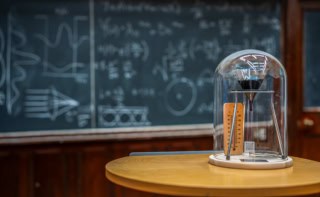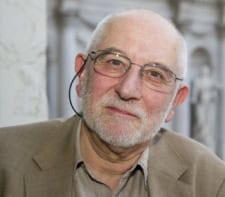New-style GCSEs with less science in them will make for more inspiring teaching

Many physicists, including the staff at Physics World, gain a certain wry satisfaction from thinking about how easy today’s school science is. Priding ourselves on how difficult our exams were, we note that in the UK 29.4% of A-level physics students gained A grades this year, compared with 13.9% in 1990.
This disdain could be reinforced by new science GCSEs being introduced for 14–16 year olds this month. These courses, designed to appeal to the broad mass of students rather than just those who go on to study science at higher levels, emphasize the process of science, in other words how scientific knowledge is amassed and used (see pp12–13; print version only). As a result, they contain less actual scientific content.
For example, many students taking just the compulsory core GCSE in science will not learn Ohm’s law. Those who take either two or three science GCSEs will learn the famous equation, but only the latter will have to manipulate it. As the OCR’s Twenty First Century Science curriculum spells out, “rearrangement of the equation [R = V/I] is expected only on the higher tier”.
It is hard not to be shocked by how little maths today’s students of GCSE science actually need. But the new courses do have much to commend them. As the developers of the courses point out, the vast majority of students taking GCSE science will never become scientists themselves. They do not need a specialist’s training, but rather a broad understanding of, and appreciation for, modern science. Learning about the major themes in science and considering how science works should allow pupils to think more critically about the scientific issues that affect their lives, be it the supposed health risks of mobile phones or the claimed effects of global warming.
A broader approach with less rote learning of scientific content can also benefit pupils who are more able. Again, thinking of electric circuits, it is better that students have a clear physical understanding of why components connected in series and parallel exhibit different behaviour, rather than becoming expert in manipulating the associated equations. These details can be filled in later.
But will the courses encourage students to stick with science? Since 1982, the number of students sitting A-level physics has more than halved – a situation that the Confederation of British Industry last month warned will have serious implications for national and individual prosperity. Unfortunately, pilot studies of the new-style GCSEs indicate that while students appear to enjoy the courses, they are not that much more likely to take A-level physics as a result.
What is really needed to transform physics education in the UK is an injection of talented, enthusiastic physics teachers – currently only one in 10 science teachers in the UK has a physics degree. The government has taken some steps to address this problem but it remains a huge challenge. However, in the meantime, the new GCSE curricula should allow existing science teachers to provide lessons that are more inspiring. Doing so will be difficult for some teachers, who are more used to transmitting a fixed body of knowledge rather than discussing the often quite sophisticated ideas associated with the scientific process, such as uncertainty, causality and risk. But mastering this change of teaching style will be well worth it. The guiding principle should be to teach less and teach it better.



